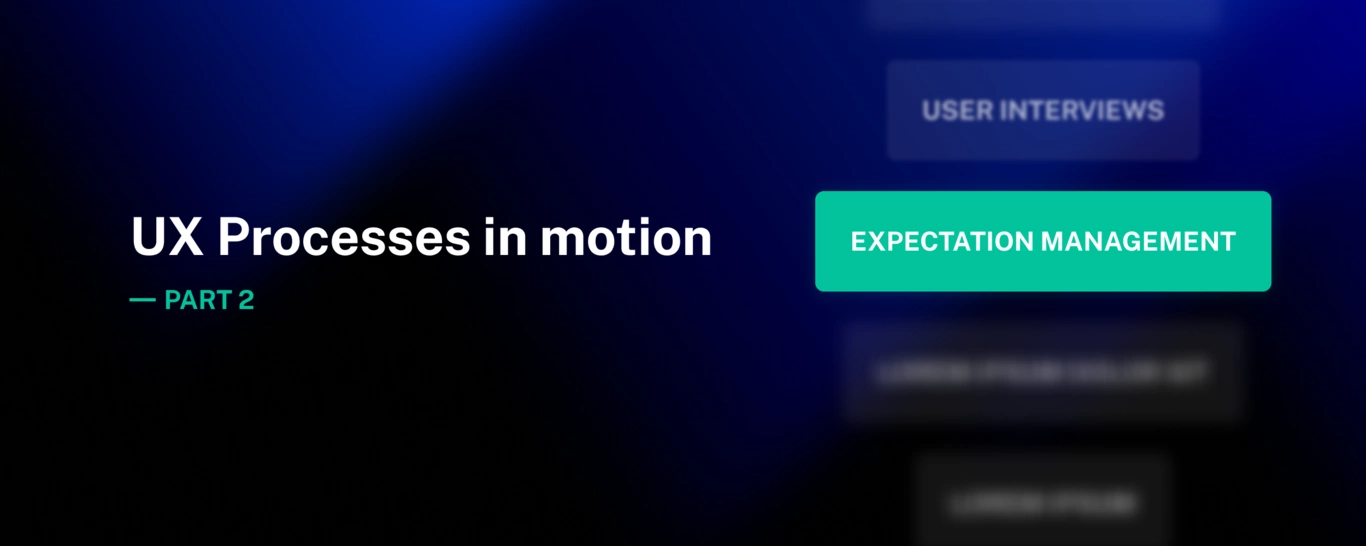
UX Processes in motion: Our pain points as we see them - Part 2
In the previous post, we dealt with finding the relevant users for the research. Let’s continue our UX Research journey to a magical place, the city of Perfection where pain points and bottlenecks are just words people have never heard of. But to get there, we must visit some of them along the way and find a solution.
How to limit ideation?
With each design comes great power. Beautiful ideas, well-designed mega menu with a bouncing video in it. The options are infinite. But how do we limit the new ideas flowing in, causing eternal rounds of design versions?
The keywords here are: Expectation management. The budget and timeline must be controlled, otherwise we will end up with hopes and dreams never born.
Including developers and UXers to each phase has never been more important. Let’s gather the ideas, brainstorm to get the most satisfying outcome, but keep the implementation in mind, because not every idea can be developed in a blink of an eye. We should also make sure not to forget: delivering business value is our goal.
Regular and clear communication is always a good idea. The stakeholders must be on the same page, informed early and often about budget and timeline restrictions, as well as the weight of their ideas. Some design elements might be easy to implement, others can take a village of developers and three winters passing by to get results.
While we’re looking at the importance of communication, we have arrived to yet another pain point that should be discussed:
Key Stakeholders have different perceptions of the product

It is understandable that each person has their own taste. When it comes to the development of a website, it can be rather precarious, and let’s be honest annoying, to have a bunch of ideas jumping around.
To make sure everyone will be on the same page, or at least close to it, a good project starts with a single PO.
An experienced Product Owner will be able to gather these hopes and dreams, leverage their value, and relay the well-defined requirements on to us.
Hint:
Create a stakeholder map even if there is a single PO.
Invite key stakeholders to relevant demos.
While in the city of Perfection, there’s no need to know anything beyond the PO, in the real world the empowerment of the PO is usually limited. Understanding the real decision-making process and getting feedback from the key stakeholders will mitigate serious risks.
Of course, it is not a guarantee for success, but it can set us up to get off to a great start. The rest depends on our dedication to actually creating value for both parties.
Stay tuned if you’d like to learn about our revised and detailed UX process which we’ve created after a fantastic workshop at The UX Nordic Conference 2023!
